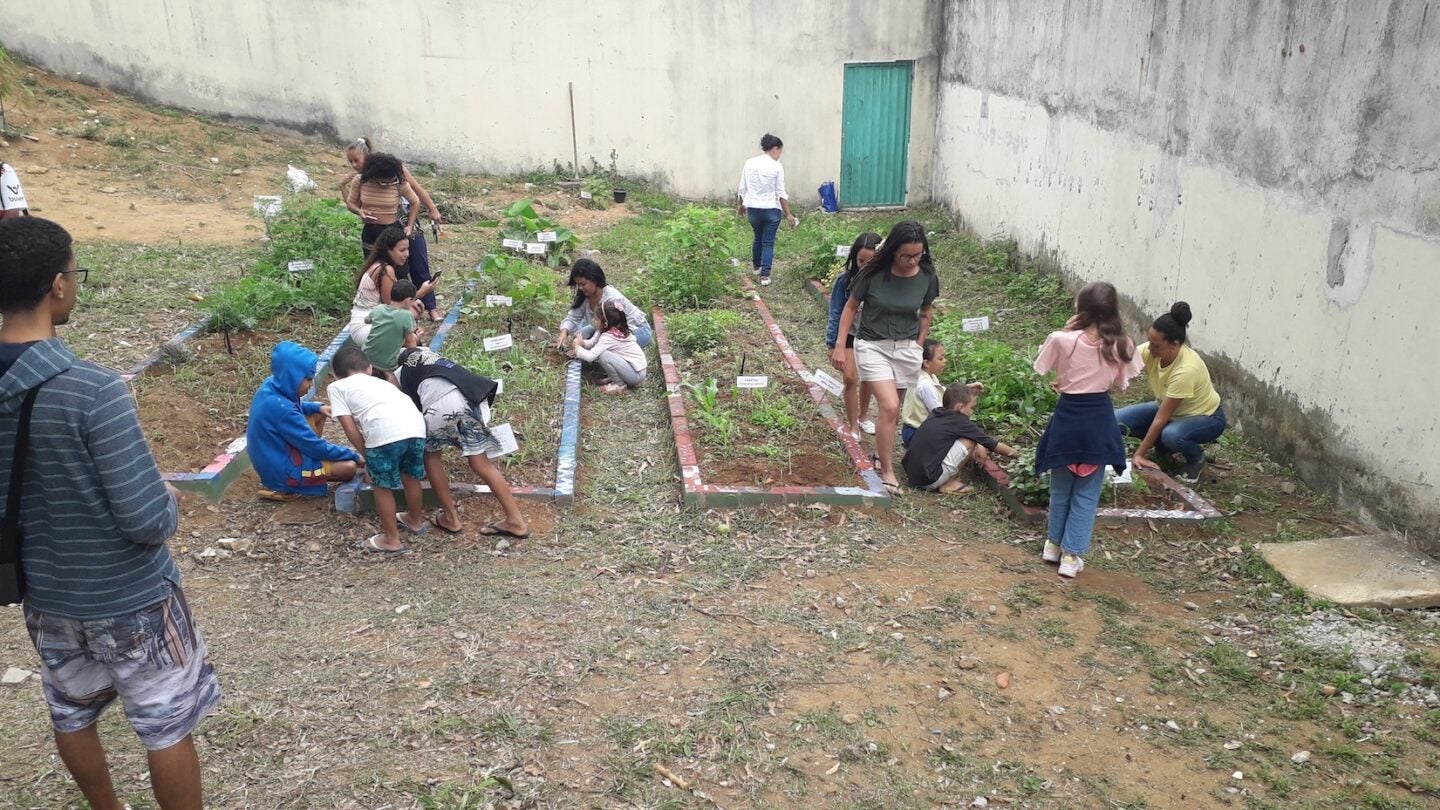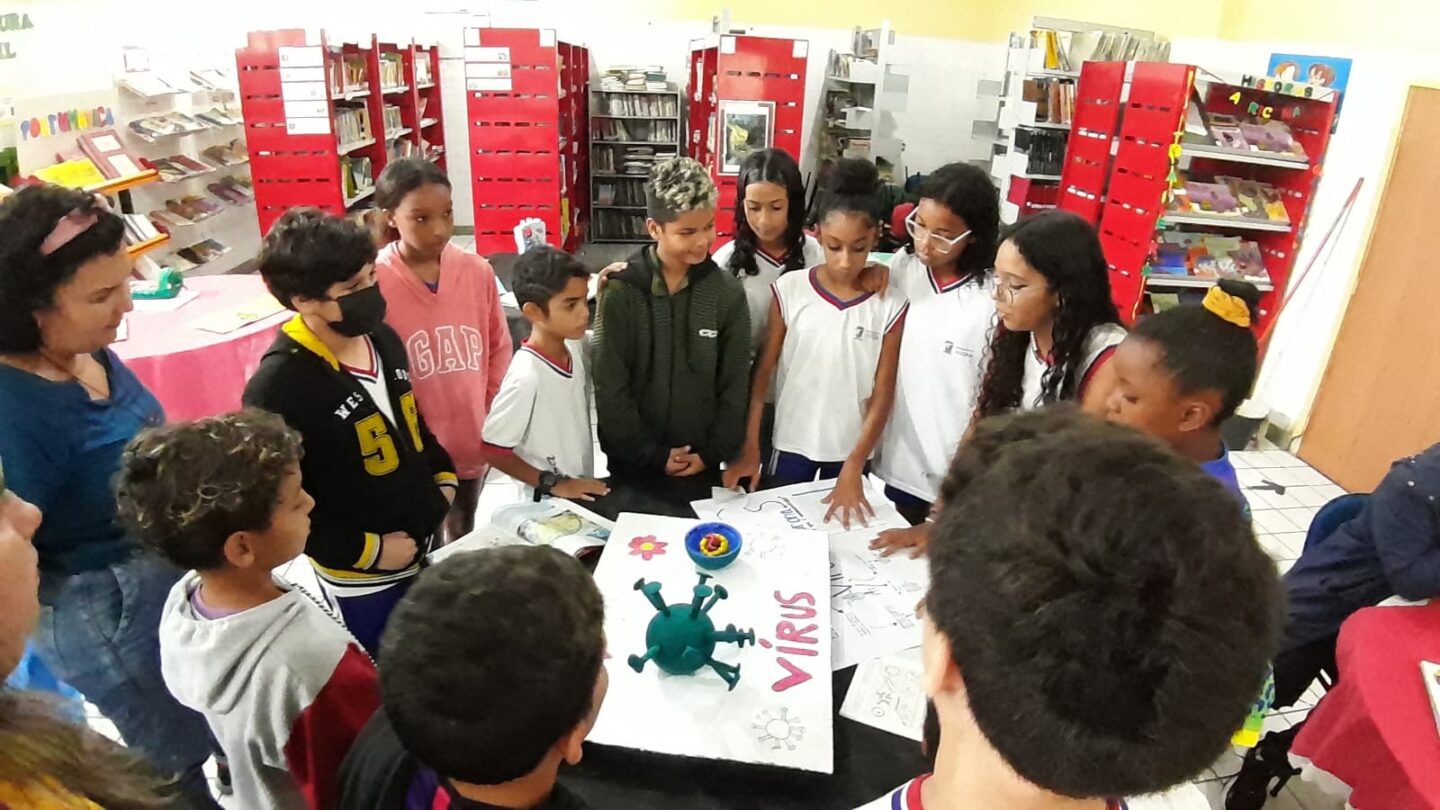It was during a field trip to a museum. Fifteen students – on their own initiative – began collecting trash from the ground near the river.
“We can bring this back to school to recycle,” they told their teacher.
“In that moment, I could see how our environmental project had impacted their lives,” said Marina Castro, a science teacher who brought recycling and community gardening to her school in Vitoria, Brazil through an extracurricular sustainability program.
“They realize now they are part of a larger community, and are responsible to that,” Castro said of the 6th to 9th graders she was teaching.
Growing up, Castro did not have access to climate change courses. But her mother, a biologist, exposed her to the importance of biodiversity, taking her to the Atlantic Forest, which runs along the eastern coast of Brazil and is home to a wide variety of animal and plant species.
In college, Castro majored in biology. “That’s where I began to think about how policies have direct consequences in our lives,” she said.
 Students setting up a community garden. (Photo Courtesy of Marina Castro)
Students setting up a community garden. (Photo Courtesy of Marina Castro)
Prioritizing Human Life and Biodiversity in Environmental Work
As part of obtaining her Master’s Degree in social anthropology, she worked with Quilombola communities, initially established in the mid-1500s by escaped slaves in remote parts of Brazil.
The communities, considered guardians of the forest, have a role in fighting climate change, particularly through their farming methods that reduce greenhouse gas emissions.
From this experience, “I knew I wanted to work on something that had both social and environmental applications,” Castro said. “Whether we are looking at Quilombola communities or favelas (slums), it’s important that we talk about the environment in the context of how it impacts humans.”
She began teaching science five years ago. She was able to dedicate 15 hours a week of her workload to the environmental project in 2021 and 2022 with help from Ensina Brasil, which is part of the Teach For All network. Beyond the hands-on work of setting up recycling for the school and establishing a garden, the project included discussions that encouraged her students to think with complexity about environmental issues.
“For example, when we build hydroelectric plants, they flood large areas where people are living. So we have clean energy, but what is the price?” Castro asked.
“We also need to think about animals who live on earth and how our actions impact them. Also where the minerals come from that are used in our computers or our phones, and how they are collected. I never took classes like this.”
 Students study the corona virus and its relation with deforestation and climate change. (Photo courtesy of Marina Castro)
Students study the corona virus and its relation with deforestation and climate change. (Photo courtesy of Marina Castro)
Changing the System to Incorporate Environmental Studies
Twenty students participated directly in the project, but all 500 students at the school were impacted. When it wrapped in December 2023, “my students were sending me texts, asking me to keep the project going.”
She doesn’t know what will happen with the recycling program or the community garden without a dedicated faculty sponsor. Many teachers told her they were already overworked and unable to add sustainability and environmental studies to their curriculums unless they were given the time and the support.
“I understand that,” she said. “Everyone is working 50 hours a week. They say, ‘I’m too tired, it’s not my subject, I don’t have time for more.’ And it’s true.”
“But this is extremely important,” she said, “and impacts the way we live on this planet, and in community. Clearly, we need to change the system so this kind of teaching can be prioritized.”
Find her solution on the Teachers for the Planet website.